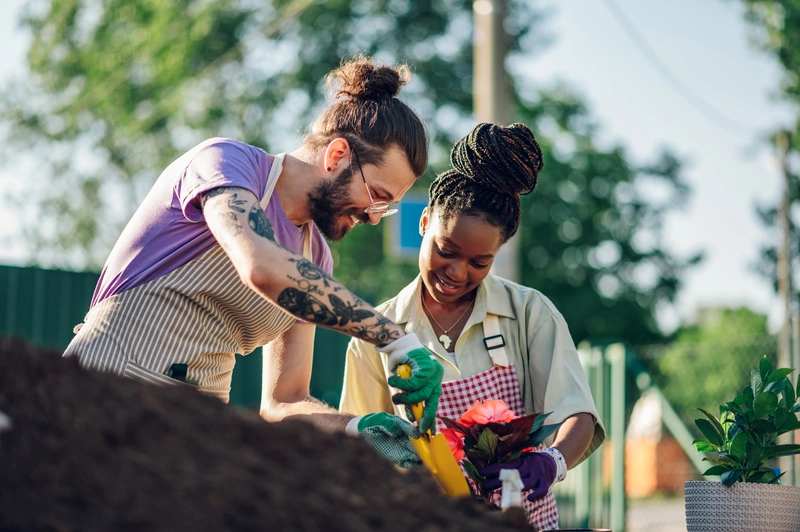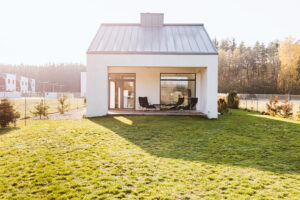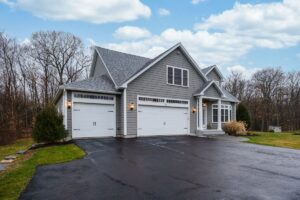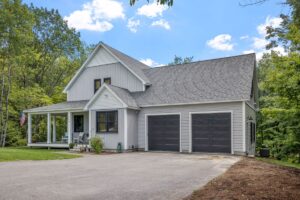Sustainable landscaping is more than just a trend; it’s a way to create beautiful, functional outdoor spaces that are environmentally friendly and resource-efficient. For homeowners in San Mateo, sustainable landscaping offers the opportunity to enhance the beauty of their property while reducing water usage, minimizing maintenance, and supporting local ecosystems. In this blog, we’ll explore how you can enhance your San Mateo home with sustainable landscaping practices.
1. Drought-Tolerant Plantings
San Mateo’s climate can be challenging for maintaining a lush landscape, especially during dry seasons. Drought-tolerant plants, such as succulents, lavender, and native grasses, are well-suited to this environment and require less water to thrive. These plants not only conserve water but also add unique textures and colors to your garden, creating a vibrant and resilient landscape.
2. Efficient Irrigation Systems
Water conservation is a key component of sustainable landscaping. Installing an efficient irrigation system, such as drip irrigation or a smart sprinkler system, can significantly reduce water waste. These systems deliver water directly to the root zone of plants, minimizing evaporation and ensuring that your landscape receives the right amount of water. Consider using rain sensors or weather-based controllers to further optimize water usage.
3. Native Plants
Native plants are a cornerstone of sustainable landscaping. These plants are adapted to the local climate and soil conditions, making them more resilient and requiring less maintenance than non-native species. In San Mateo, native plants such as California poppies, manzanita, and ceanothus can thrive with minimal water and care. Additionally, native plants support local wildlife, providing habitat and food sources for birds, insects, and other creatures.
4. Rainwater Harvesting
Harvesting rainwater is an effective way to reduce your reliance on municipal water supplies and make your landscape more sustainable. Rain barrels or cisterns can be installed to collect rainwater from your roof, which can then be used to irrigate your garden. This not only conserves water but also helps reduce stormwater runoff, which can carry pollutants into local waterways.
5. Permeable Paving
Traditional paving materials, such as concrete and asphalt, can contribute to runoff and soil erosion. Permeable paving materials, such as gravel, permeable pavers, and porous concrete, allow water to infiltrate the ground, reducing runoff and promoting groundwater recharge. These materials are an excellent choice for pathways, driveways, and patios in a sustainable landscape.
6. Composting and Soil Health
Healthy soil is the foundation of a sustainable landscape. Composting organic waste, such as kitchen scraps and yard trimmings, creates nutrient-rich compost that can be used to improve soil structure and fertility. Incorporating compost into your garden beds enhances the soil’s ability to retain moisture, reduces the need for chemical fertilizers, and promotes healthy plant growth.
7. Low-Maintenance Lawns
Traditional lawns can be water-intensive and require frequent maintenance. Consider replacing or reducing the size of your lawn with low-maintenance alternatives, such as groundcovers, ornamental grasses, or clover. These alternatives are not only drought-tolerant but also add visual interest and diversity to your landscape. If you prefer to keep a lawn, opt for drought-tolerant grass varieties and practice water-wise lawn care techniques.
8. Mulching
Mulching is a simple yet effective way to conserve moisture, suppress weeds, and improve soil health in your landscape. Organic mulches, such as wood chips, bark, or straw, decompose over time, adding nutrients to the soil. Mulch also helps regulate soil temperature, protecting plant roots from extreme heat or cold. Apply a layer of mulch around trees, shrubs, and garden beds to enhance your landscape’s sustainability.
9. Wildlife-Friendly Gardens
Creating a wildlife-friendly garden is a rewarding way to support local biodiversity and enhance the ecological value of your landscape. Planting a variety of native plants, providing water sources, and avoiding the use of chemical pesticides can attract beneficial insects, birds, and pollinators to your garden. Incorporating features like birdhouses, butterfly gardens, and bee habitats can further promote a thriving ecosystem.
10. Energy-Efficient Lighting
Outdoor lighting is essential for both safety and ambiance, but it can also be a significant energy drain. Consider using energy-efficient lighting options, such as LED lights or solar-powered fixtures, to reduce your energy consumption. Motion sensors and timers can also help minimize unnecessary lighting, further enhancing your landscape’s sustainability.
Interested in creating a sustainable landscape for your San Mateo home? Contact Contos Builders today to discuss your project and discover eco-friendly solutions that will enhance the beauty and sustainability of your outdoor space!






